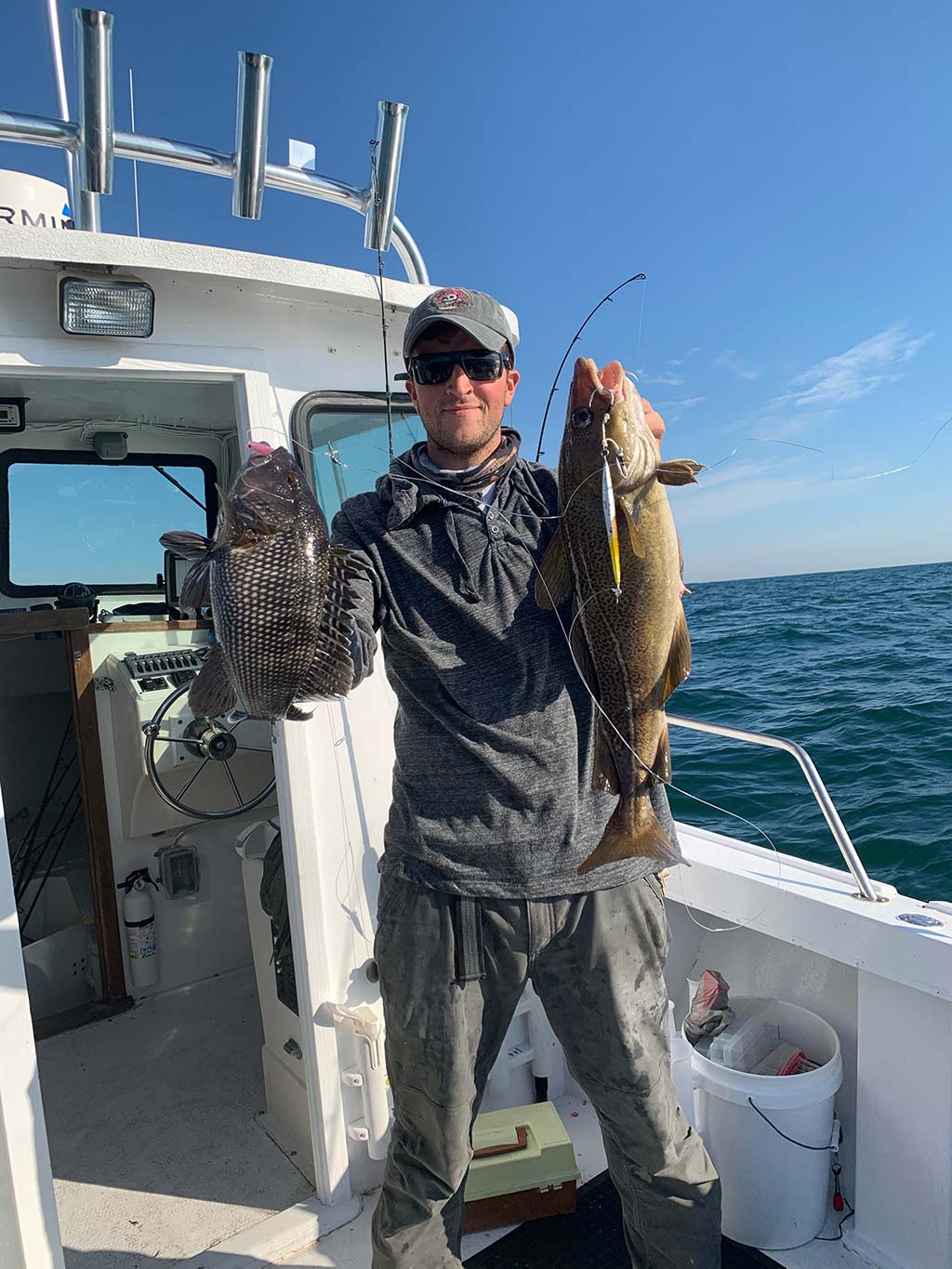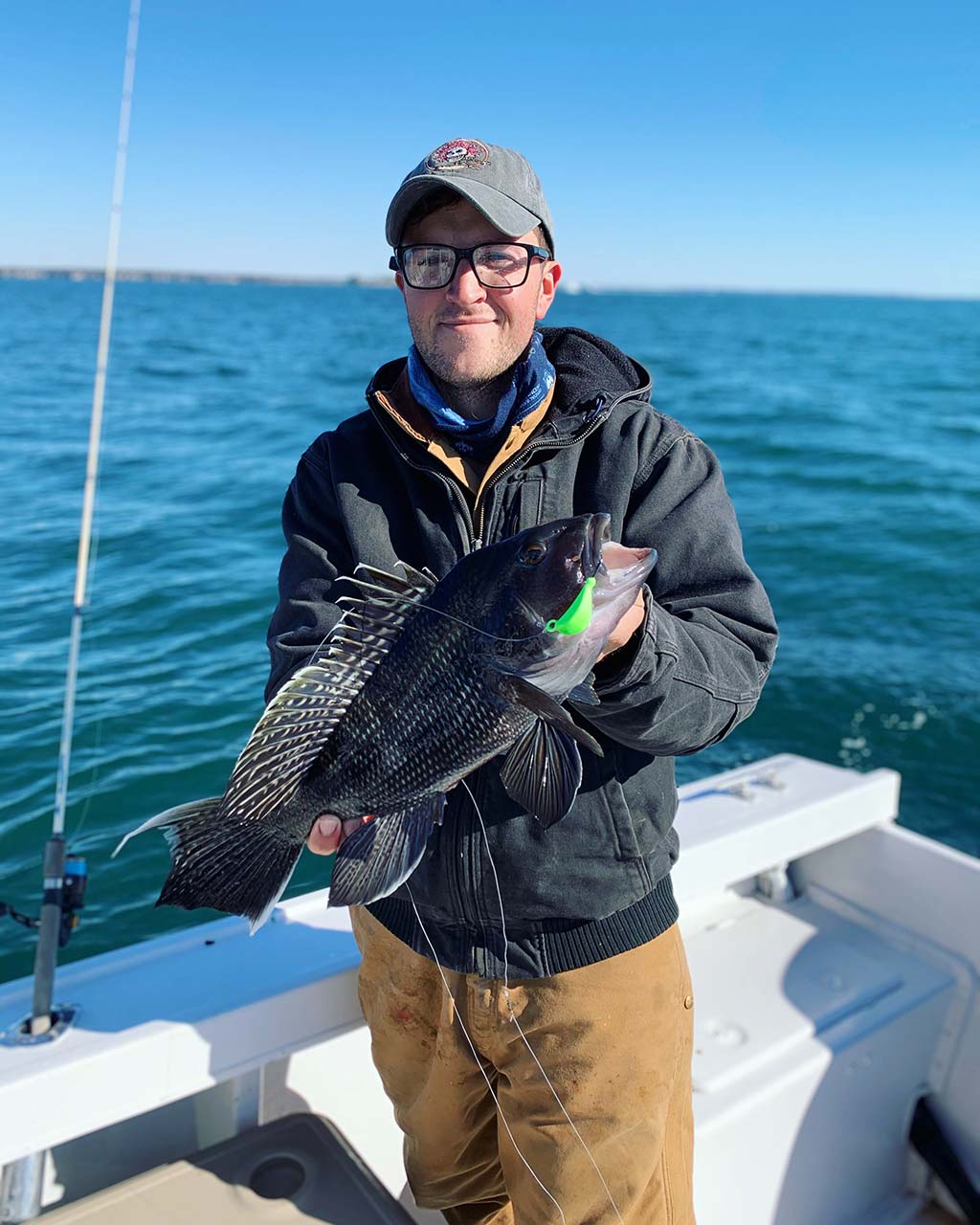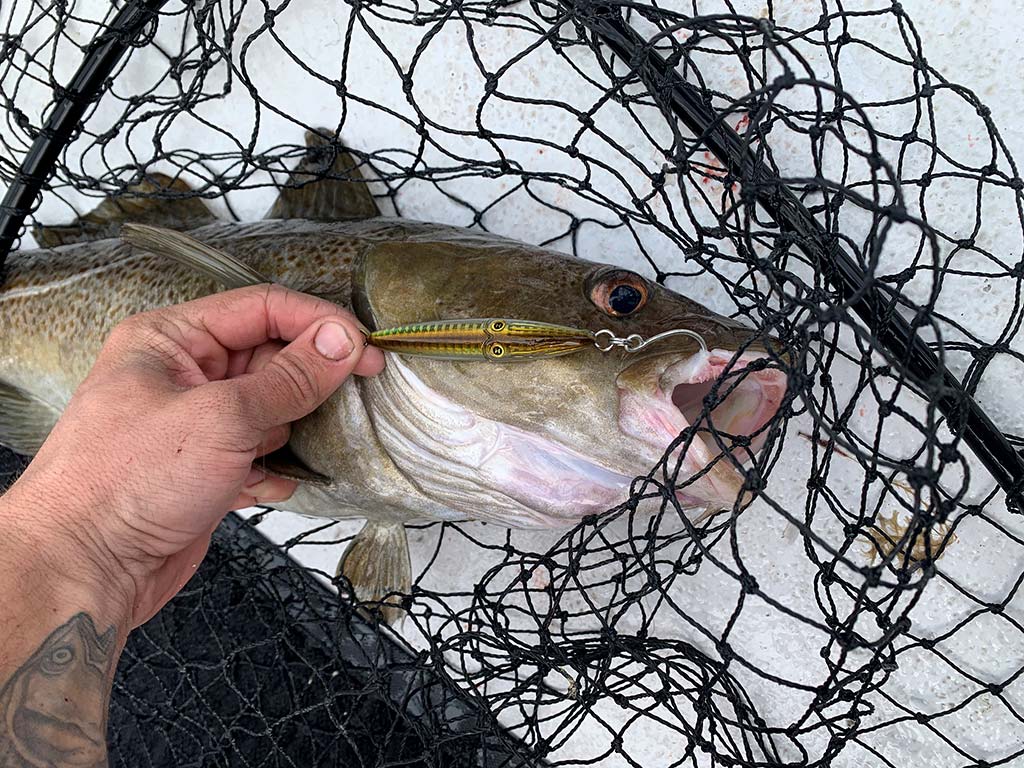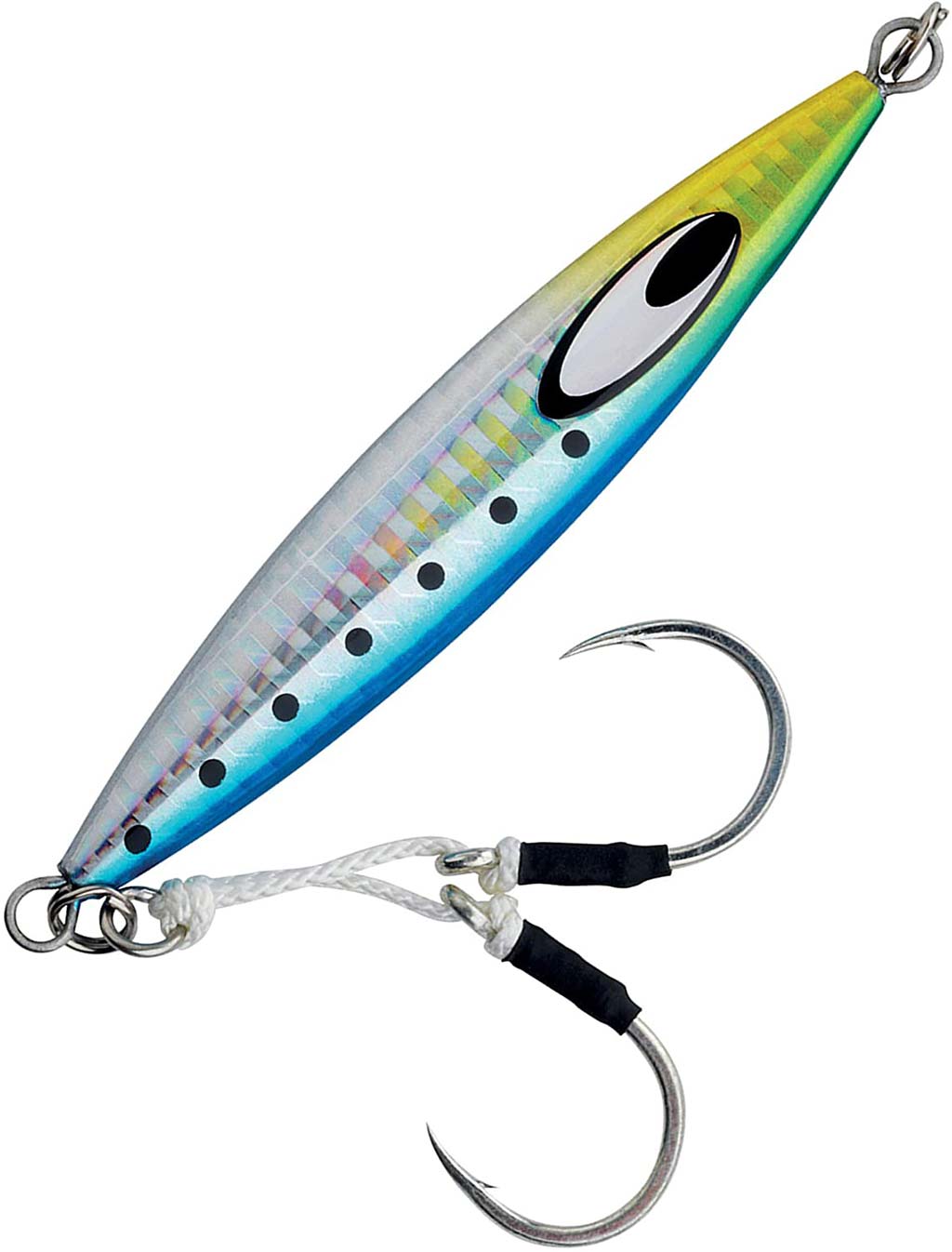
Block Island’s East Ground offer amazing mixed-bag fishing in the fall.
Fall fishing can be amazing in Rhode Island and there are a lot of species available for anyone fishing from a boat. You might find yourself distracted by albies, you might find big surface blitzes of bass, some football tunas might make a swing inshore, but when October comes around, I find myself making regular runs to the East Grounds.
The East Grounds are a plateaued reef situated in 50 to 70 feet of water, off the eastern shore of Block Island. The bottom fishing for blackfish, cod and sea bass is the big draw, but you have to be prepared for everything out there, because so many species end up on this stretch of fishy bottom, especially in the fall.

Why The Jig?
You don’t have to get fancy, a simple jig and teaser rig will put lots of fish in the boat. The rig I like to run is a 4- to 8-ounce Butterfly Jig on a 50-pound fluorocarbon leader; I tie a dropper loop about 4 feet above the jig and attach a simple bucktail teaser fly to the loop. I have had success using just about every color available, but my go-to is a silver jig and a white teaser. Another jig that has worked really well for me is the Daiwa SK Jig in ‘sardine’ color. I would have to say that this jig has put more cod and sea bass in the boat than anything else for me. I will also use Hogy Sand Eel Jigs and, of course, Butterflies and Flat-Falls from Shimano. But I do tend to lean toward the SK’s because I like their components and colors, plus they simply catch fish.
I like to use jigs instead of bait because I find that artificials weed out most of the ‘interference fish’ you will catch on bait. I find that I have the most success using a ‘sweep jigging’ technique. It’s very important to keep your jig down within 15 feet of the bottom and to work methodically, trying to pinpoint where the fish are located; both in physical location and in the water column. I usually start on the edge of structure and drift over it until I find actively feeding fish. Once I establish where the fish are holding, I take a more focused approach and make short, dialed in drifts over the productive area until the bite dies off, then I repeat the process somewhere else.

Slower Tides
I seem to have great success around periods of slack tide, along with the beginning and end of each tide. This is especially true for codfish which seem to feed heavily when the water falls slack. Another fish that becomes a lot easier to target at slack tide on the East Grounds is blackfish. I like to use tog jigs, baited with half of a green crab, in sizes ranging between 1 and 3 ounces, depending on water depth and current. And don’t be surprised if you catch some nice sea bass or a keeper cod on this rig because they love them too. The main thing with the tog jigs is maintaining contact with the bottom.
I use a Tsunami Slow Pitch rod for these applications, coupled with an Avet SX reel. Comfort is key, that and having a rod that has enough backbone to handle heavier jigs and bring in bigger fish. I typically run 30-pound braid on this setup, the thinner diameter cuts through the water better, allowing me to use lighter jigs while still maintaining bottom contact.
Focus On Good Bites

But simply being on the East Grounds will not put you in the fish. This area is vast and it’s still very important to focus on structure. Transitions from rock to sand, reefs, boulders, ledges and wrecks are all points of interest that any bottom fisherman should be drawn to. I recommend using your electronics to identify structure while also looking for bait balls and, of course, the fish themselves. I’ll stress again, that when you find fish, you should stay on them by making short, focused drifts over the area where you hooked up.
The East Grounds always have something to catch and if you’re heading out with the hope of bringing home a cooler full of fillets, it’s definitely a great place to go. In addition to sea bass, codfish and tautog, I have caught fluke, monkfish, pollock and even small bluefin tuna while sweep-jigging this awesome piece of underwater real estate. I always have a 50-pound class rod rigged with a 20/0 circle hook and a wire trace on board at all times, because you never know when a mako or other shark species will make an appearance. Fishing the classic way for cod and sea bass with clams with a high low rig does have its time and place so make sure never leave the dock without them. When the jig bite is tough, you know something is going to eat the bait.
I concentrate on this fishery throughout all of October and well into November, try to make my yearly tradition of getting out one last time on Thanksgiving weekend. Weather can be very unpredictable in the late fall and in my 23-foot boat I have learned very quickly that it is important to let the weather tell you when it’s time to turn around and head home with your tail tucked between your legs. But when those weather windows open up, make sure you have plenty of pre-tied rigs at the ready and a good supply of jigs, some bait and some lead—these end of the season trips can be nothing shore of awesome.




